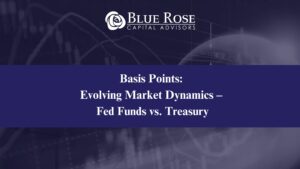Capital markets in 2020 were defined by the same factors that affected our everyday lives: pandemic related ups and downs, stabilization with fiscal stimulus, and improving sentiment over the summer, an unforgettable presidential election, and hope-inspired relief from a vaccine. Equities have soared, and yields have declined across all sectors and credit quality. After an initial spike, high grade credit spreads began to recover lower in May, and more rapidly than BBB and lower credits. Now during the last days of 2020, yields continue to remain low. Expected 2021 issuance projections vary across sectors and geography, but I believe 2021 will see robust issuance, and continued investor appetite for infrastructure and the yield it offers, with issuers needing to fund pandemic-induced deficits, overriding restraints to fund new projects with hammered budgets.
COVID-19 has impacted credit ratings depending on size and type of institution, and not uniformly, but undeniably with a negative bias with downgrades and adverse outlook revisions. The outlook for 2021 continues to be negative as the pandemic continues to weaken historical revenue streams and secular permanent changes to how and where we live, work, and educate our children. The need is great everywhere to provide financial assistance to employees, and for institutions with operating deficits there are continued challenges and uncertainty ahead. As is generally the case, the strong will fare better than lower-rated institutions, which will see a greater negative impact with increased expenses and decreased revenues. Overall, many institutions revised budgets in the middle of the budget year and many have managed to maintain liquidity. Five-year strategic business plans have been derailed, and most are operating with a much shorter tactical time horizon, with 2021 likely to be another year of just-in-time responses.
The first two months of 2020 saw the continued 30- to 40-year decline in interest rates, but by mid-March COVID-19 caused funds to see huge outflows and dramatic spikes in credit spreads. However, after unprecedented monetary and fiscal relief action taken by the Federal Reserve and the Treasury, investors slowly started to come back, leading to record issuance in the last quarter which was all absorbed without any problems. A robust infrastructure bill, and the continued trend towards taxable, corporate-like issues will be the biggest drivers of supply and demand, and potentially the reintroduction of tax-exempt advance refundings will the biggest drivers of issuance in 2021.
Most institutions in 2020 have declines in operating margins, stemming from declines in revenues and increases in operating expenses, in some cases resulting in up to 15% operating losses and in other cases still maintaining a positive margin up to 12%, albeit overall lower by 1-4% compared to similar statistics in 2019. This decline in operating margin has been offset by the growth of balance sheet investments and endowments, which have seen improvements up to 10-20%. To offset the drainage of cash and liquidity, many institutions have entered into credit agreements to boost liquidity for operating purposes.
What will 2021 bring? Well, due to unprecedented and extraordinary fiscal stimulus resulting in 66% growth in M1 money supply with more to come, and with the Federal Reserve openly stating and pondering that it will deliver “whatever it takes” monetary support, I think there is a really thin line in markets, where fundamental economic activity matters so little, but government support matters so much, as to whether we have a sustainable investor demand and a continued bull market, or just a castle built on sand. My advice is to make a plan for the base case scenario, but also plan for both the downside scenario and the overheating scenario, because we are in a bubble of epic proportions.
The overheating scenario seems like a luxury problem. So, I’ll just outline what I believe to be the downside scenario. The extension of enhanced unemployment benefits and other fiscal support into 2021 just isn’t enough. The Congressional gridlock continues with Republicans likely holding Georgia and persists through the foreseeable future with no new meaningful stimulus for recovery, to support growth and prevent a double dip recession. The combined effects of the wave of evictions on mortgage-backed real estate security defaults because of inability to pay rent (remember 2009 was triggered by mortgage defaults), and delays in the vaccination rollout, new strains, or allergic reactions, result in a multi-year vaccination reality versus a once-and-done 2021 year, requiring social distancing well into 2022. I think instead of getting euphoric on the prospect that the pandemic is all in the rear-view mirror, I think it’s time to get, and be, very defensive.
Contact Johan Rosenberg:
612-839-7627| [email protected]
or
Book a 45-minute conversation: Appointment Scheduler.



